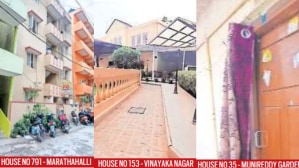After Karnataka, X Corp and Centre battle over Sahyog portal in Delhi High Court
X Corp has resisted joining the portal — meant to streamline sending removal notices to online intermediaries — and has challenged it in Karnataka. The Delhi HC has now asked the Centre if the tech firm can be onboarded for national security, trafficking cases
 The bench is due to consider the matter further on September 16. (File Photo)
The bench is due to consider the matter further on September 16. (File Photo)The Delhi High Court Tuesday sought the government’s response on whether X Corp can be onboarded on the Sahyog portal — managed by the Home Ministry’s Indian Cyber Crime Coordination Centre (IC4) — for specific purposes such as extending cooperation in cases pertaining to national security and human trafficking.
The suggestion was made by the division bench of Justices Prathiba Singh and Amit Sharma.
X Corp has so far resisted being onboarded on the portal. During a hearing before the Karnataka High Court last month on its plea challenging the government’s move, the tech firm had compared the portal to a “wolf in sheep’s clothing”. It has also objected to the Sahyog Portal for intermediaries, referring to it in an earlier hearing as a “censorship portal”. The Karnataka HC reserved its judgment in the case.
Justice Singh, addressing senior advocate Akhil Sibal orally remarked, “… If all intermediaries take objection [to being onboarded on Sahyog], police will have to write to 20 portals [seeking information from intermediaries on alleged criminal activities/law and order issues]… if you’re not willing to come onboard even for child trafficking… then it’s a problem… we cannot have a situation where any intermediary comes and says we will not cooperate with law-enforcement agencies [on crimes pertaining to] human trafficking, child trafficking, drug trafficking and national security.”
Sibal pointed out that the portal has no legal backing and the issue is already under consideration before the Karnataka HC, where it goes to the root of it. He also highlighted that the portal provides for no bifurcation where a social media intermediary, such as X Corp, can opt to cooperate in certain specific areas of law and order, and abstain from other categories such as economic crimes.
The Centre has now been asked to file a response on this specific aspect, on whether X Corp can be onboarded on the platform for the “specific situation in cases involving child trafficking, human trafficking, drug trafficking and national security”.
The bench is due to consider the matter further on September 16.
The High Court was hearing a habeas corpus plea initiated last year. It had expressed concern that although the IT (Intermediary Guidelines and Digital Media Ethics Code) Rules, 2021 (hereinafter ‘Intermediary Rules, 2021’) require intermediaries to respond to information requests from law-enforcement agencies within a maximum of 72 hours, this upper limit cannot be considered as a norm in each case.
The court had opined that “the entire process, including human-to-human interaction, needs to be made simpler and robust enough to facilitate live interaction between the Intermediaries and LEAs”.
As of April this year, 65 intermediaries had been onboarded on the portal, with further onboarding of more intermediaries underway.
X Corp, in its plea before the Karnataka HC, is challenging the constitutional legality of content blocking by the government under IT Act Section 79 (3) (b), instead of Section 69A, which comes with safeguards for intermediaries against arbitrary blocking orders, as interpreted by the SC in the Shreya Singhal judgment.
The Sahyog portal, piloted and subsequently launched in the latter half of 2024, is aimed at expediting the process of sending notices to IT intermediaries by the appropriate government or its agency under Section 79 (3)(b) of the IT Act, 2000, to facilitate the removal or disabling of access to any information, data or communication link with an objective to curtail/detect unlawful/criminal act.
The provision of Section 79(3)(b), part of the safe harbour provision, requires that content flagged as unlawful by the government or its agency has to be taken down first, whereafter any grievance or appeal is entertained.
The IC4 told the Delhi HC in April that it is in the process of integrating the API with around 1,100 entities such as internet service providers, social media intermediaries, and telecom networks — including giants such as Meta, WhatsApp, Instagram and Microsoft.
Following the API integration with IT intermediaries and other entities in cyberspace, any request for a takedown raised by a law-enforcement agency will automatically be pulled down in real-time, minus any human intervention.







